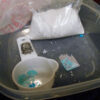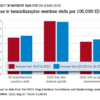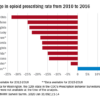A retrospective study of clonidine-overdose patients characterized the clonidine overdose syndrome as marked by sedation, hypotension, bradycardia, and excessive pupillary constriction (Clin Toxicol [Phila]. 2017 Mar;55[3]:187-92).
“The combination of clonidine and opioids is particularly dangerous,” according to Dr. Walley. “Even though it mimics what an opioid overdose looks like, a clonidine overdose is not responsive to naloxone.”
Stimulants
One-quarter of patients who are prescribed methylphenidate or amphetamine for ADHD report being asked to divert their medication, and 11%-29% sell or give it to others seeking to use it recreationally or as a performance aid.
It’s common for prescription seekers to misrepresent symptoms of ADHD, and this play-acting is often tough to detect. In contrast, the nonstimulant atomoxetine (Strattera) and the alpha-adrenergic agonists prescribed for ADHD aren’t linked to misuse or diversion (Postgrad Med. 2014 Sep;126[5]:64-81).
© Frontline Medical Communications 2018-2021. Reprinted with permission, all rights reserved.


